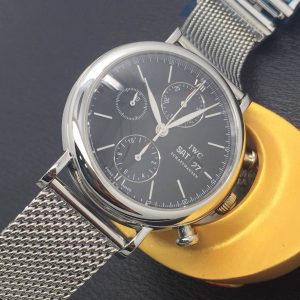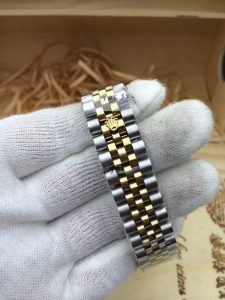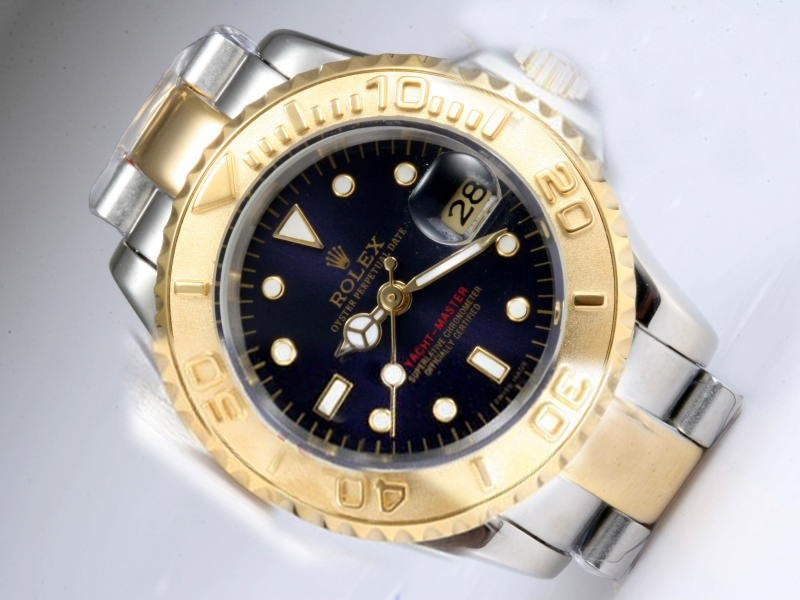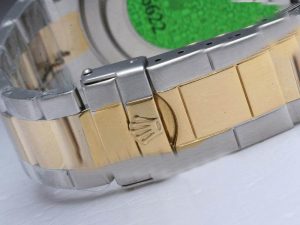The Aquanaut Travel Time “Replica Patek Philippe Advanced Research”

The Advanced Research Travel Time is an obvious departure from previous Advanced Research watches. It is, first of all, the first Advanced Research replica watch to not be an annual or perpetual calendar; it is the first not in a round case, and it’s pretty completely non-traditional in styling. What’s more, it’s the first Advanced Research watch to present an innovation in a material other than silicon.
The first and well-most obvious innovation is the “compliant (flexible) mechanism in steel.” This is the mechanism for adjusting the GMT indication forwards and backward.
You can see the “compliant mechanism” on the left, and it’s a pretty piece of work. It’s all in steel; there are no exotic materials used, and while Patek Philippe replica says it required considerable computer time, as well as high tech manufacturing methods (the press release isn’t special or unique but electric spark erosion is a reasonable candidate) it is still, strictly speaking, traditional watchmaking with traditional materials. It is fun to think, given its appearance, that it might have been nicknamed “the Crab” at Patek. 

The level of precision required probably could not be achieved with classical methods – the clearance between the leaf springs, where they form an “x,” is only 150 microns – but the whole thing is hand-finished (which must have been, given the configuration of the mechanism, and to put it colloquially, a royal pain in the ass for whoever had to do it) and it seems very cool on the other hand. It has a kind of intuitive appeal; I guess no one could imagine such a thing but the basic principle, and construction stuff, which seem obvious and self-evident when you see it working. The simplest way to understand how it works is to watch this little short from the fake Patek Philippe.
The Crab (if I may coin a nickname) has many advantages over the usual GMT switching mechanism used by the fake Patek – lower parts count (12 parts for the whole assembly, as opposed to 37 in the standard mechanism) and, just as significantly, no gears or pivots. That means no need for conventional lubricants, no friction anywhere in the mechanism, and very probably, much better durability and general functionality. The only downside I can see to it is that it doesn’t seem repairable; if there’s damage or wear, you’d have to swap out the entire mechanism for a new one – the shell would molt the Crab, instead of the other way ’round. It’s damned clever, anyway.
If you take a closer look at it, you’ll find that the innermost coil of the new version has a slight swelling in the coil, similar to the one in the outermost terminal curve. Just as the geometry of the outermost coil duplicates many of the advantages of the Breguet overcoil, so the new geometry of the inner coil duplicates that of a balance spring with a properly formed inner terminal curve. The basic idea behind all this is to set up the balance spring so that the center of gravity of the spring always coincides with the exact center of gravity of the balance – this is the basic precondition for isochronism. With the addition of the new inner terminal curve, the replica Patek’s been able to get very fantastic rate stability out of the watch, just as what we have mentioned above, the spec is -1/+2 seconds per day.
At the same time, there is an analogous technique with traditional balance springs. Just as the outermost coil geometry of the Spiromax duplicates the effect of a Breguet/Phillips overcoil, so the inner geometry of the 2017 Spiromax duplicates the effect of a mathematically correct inner terminal curve in a steel or alloy balance spring. One such curve is known as a Lossier curve and it was widely used by the American watch company, Waltham, in its high-grade railroad best replica watches.



